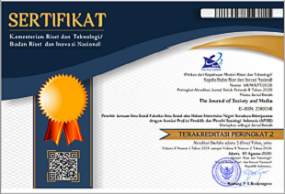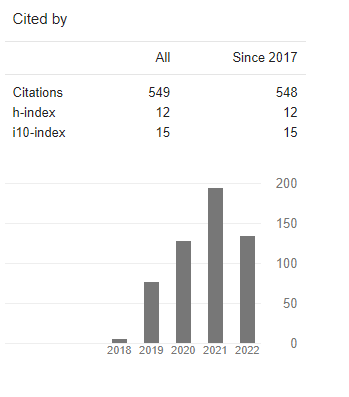The Role of Social Capital and Knowledge Capital for Freelance Creative Workers in Audiovisual Industry
-
DOI:
https://doi.org/10.26740/jsm.v7n1.p19-48Keywords:
freelance creative workers, commercial audiovisual industry, social capital, knowledge capital, the survival strategyAbstract
This study explains how capitals shape the survival strategy of freelance creative workers who work in a precarious situations in the commercial audiovisual industry. This study was conducted with a qualitative approach. Through in-depth interviews with freelance creative workers, online observations, and digital data collection, this study shows that the survival strategy of the workers can be explained further based on capital analysis focused on social capital and knowledge capital as the recognized and valued capital in the field. Both the social and knowledge capital of the workers, accompanied by workers' capacity to accumulate and convert them continuously, are relevant in shaping workers' survival strategy, which leads to the establishment of a positive reputation and capacity enhancement. This eventually leads them to gain employability and occupy strategic positioning, reflected in high bargaining power and work opportunities in the industry sustainably, as it becomes their alternative job security to survive amidst precarious conditions
References
Brook, O., Dave O'Brien, and Mark Taylor. 2018. "There Was No Golden Age: Social Mobility into Cultural and Creative Occupations." SocArXiv. DOI: 10.31235/osf.io/7njy3.
Coordinating Ministry for Economic Affairs of The Republic Indonesia. 2021. Siaran PERS Industri Kreatif dan Digital: Kembangkan Potensi, Gerakkan Ekonomi, dan Ciptakan Lapangan Kerja No. HM.4.6/37/SET.M.EKON.3/03/2021. Retrieved January 17, 2022 (https://www.ekon.go.id/publikasi/detail/2449/industri-kreatif-dan-digital-kembangkan-potensi-gerakkan-ekonomi-dan-ciptakan-lapangan-kerja)
Creative Economy Agency of The Republic of Indonesia. 2019. Laporan Kinerja Badan Ekonomi Kreatif Tahun 2019. Jakarta: Badan Ekonomi Kreatif
Hesmondhalgh, David and Sarah Baker. 2011. Creative Labour: Media Work in Three Cultural Industries. DOI: 10.4324/9780203855881.
Izzati, Larasati, Ben K. C. Laksana, Rio Apinino, and Kathleen Azali. 2021. Pekerja Industri Kreatif di Indonesia: Flexploitation, Kerentanan, dan Sulitnya Berserikat. Jakarta: SINDIKASI x FNV Mondiaal. Retrieved 24 September, 2022 (https://www.sindikasi.org/wp-content/uploads/Riset-Pekerja-Industri-Kreatif-Indonesia-Di-Bawah-Flexploitation.....pdf).
Memon, Salman B. 2019. "Does Social Capital Matter in Career Development?" Journal of Management Info 6(2); 12-18. DOI: 10.31580/jmi.v6i2.847
Nonaka, Ikujiro. 1991. The Knowledge-Creating Company. Harvard Business Review Classic Series: Harvard University.
Ritzer, George. 2011. Sociological Theory. 8th Ed. New York: McGraw-Hill.
Standing, Guy. 2011. The Precariat: The New Dangerous Class. London: Bloomsbury Publishing.
The Ministry of Tourism and Creative Economy of The Republic of Indonesia (2020). Statistik Ekonomi Kreatif Tahun 2020. Jakarta: Kementerian Pariwisata dan Ekonomi Kreatif Republik Indonesia. Retrieved 30 January, 2022
Downloads
Published
How to Cite
Issue
Section
License
Copyright (c) 2023 The Journal of Society and Media

This work is licensed under a Creative Commons Attribution 4.0 International License.
 Abstract views: 596
,
Abstract views: 596
, PDF Downloads: 672
PDF Downloads: 672












